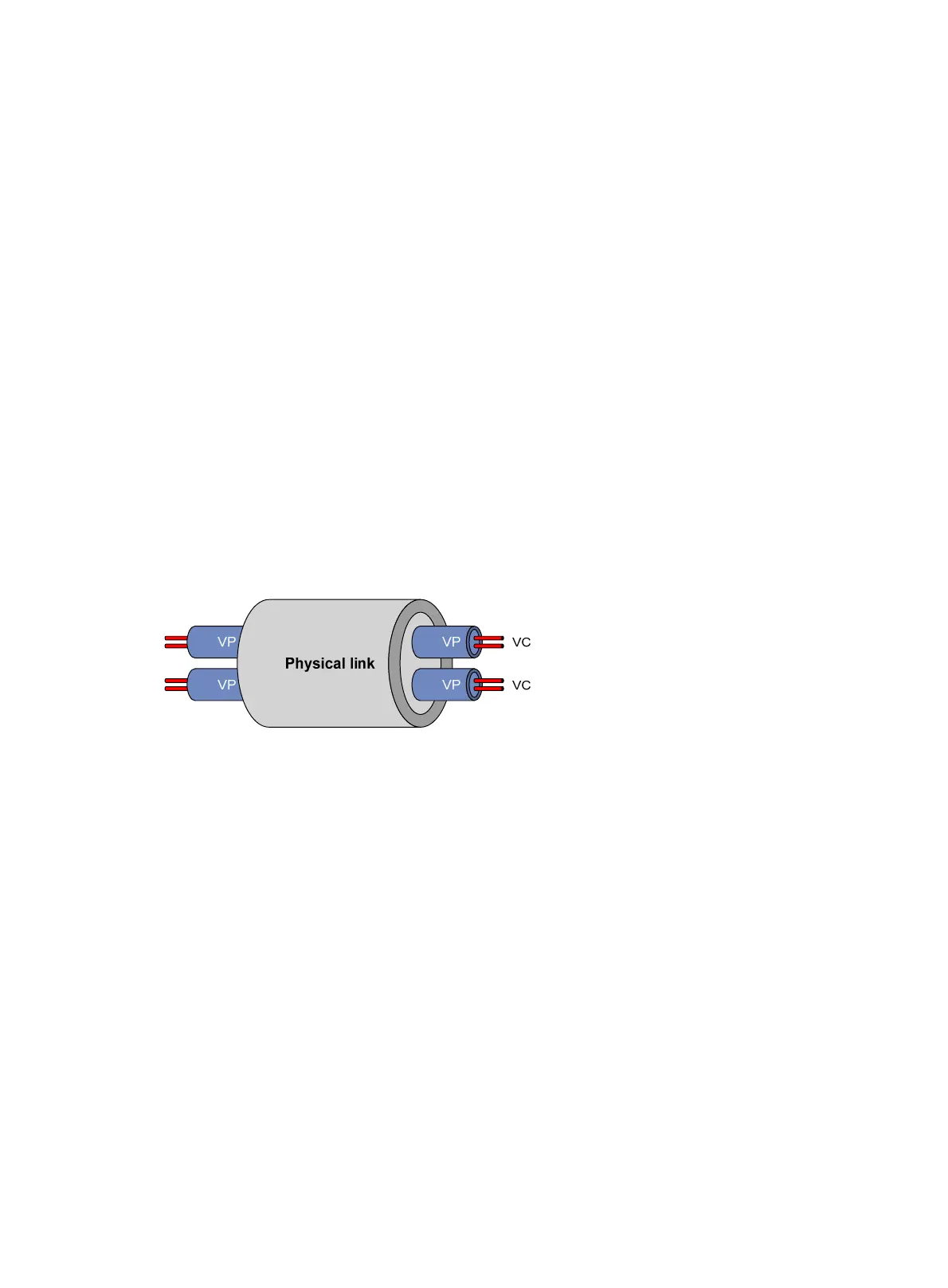188
Configuring ATM
Overview
Asynchronous Transfer Mode (ATM) is a technology based on packet transmission mode while
incorporating the high-speed of circuit transmission mode. ATM was adopted as the transmission
and switching mode for broadband ISDN by the ITU-T in June 1992. Due to its flexibility and support
for multimedia services, ATM is regarded as core broadband technology.
As defined by the ITU-T, data is encapsulated in cells in ATM. Each ATM cell is 53 bytes in length, of
which the first five bytes contain cell header information and the last 48 bytes contain payload. The
major function of the cell header is to identify virtual connection. In addition, it can be used to carry
limited flow control, congestion control, and error control information.
ATM connections and ATM switching
ATM is connection-oriented, and ATM connections are logical connections, or virtual circuits. In an
ATM network, you can create logical connections called virtual paths (VPs) and virtual circuits (VCs)
on physical links. As shown in Figure 63,
you can create multiple VPs on a physical link, and each VP
can be demultiplexed into multiple VCs. Cells from different users are transmitted over different VPs
and VCs, which are identified by virtual path identifier (VPI) and virtual channel identifier (VCI).
Figure 63 Physical link, VP, and VC
ATM uses VPI/VCI pairs to identify a logical connection. When a connection is released, all the
involved VPI/VCI pairs are reclaimed for new connections.
As shown in Figure 64, an
ATM switch forwards ATM cells by looking up the switching entries and
changing the VPIs/VCIs. The ATM switching by changing VPIs only is VP switching, and the
connection established through VP switching is Virtual Path Connection (VPC). The ATM switching
by changing VCIs only or changing both VCIs and VPIs is VC switching, and the connection
established through VC switching is Virtual Circuit Connection (VCC).

